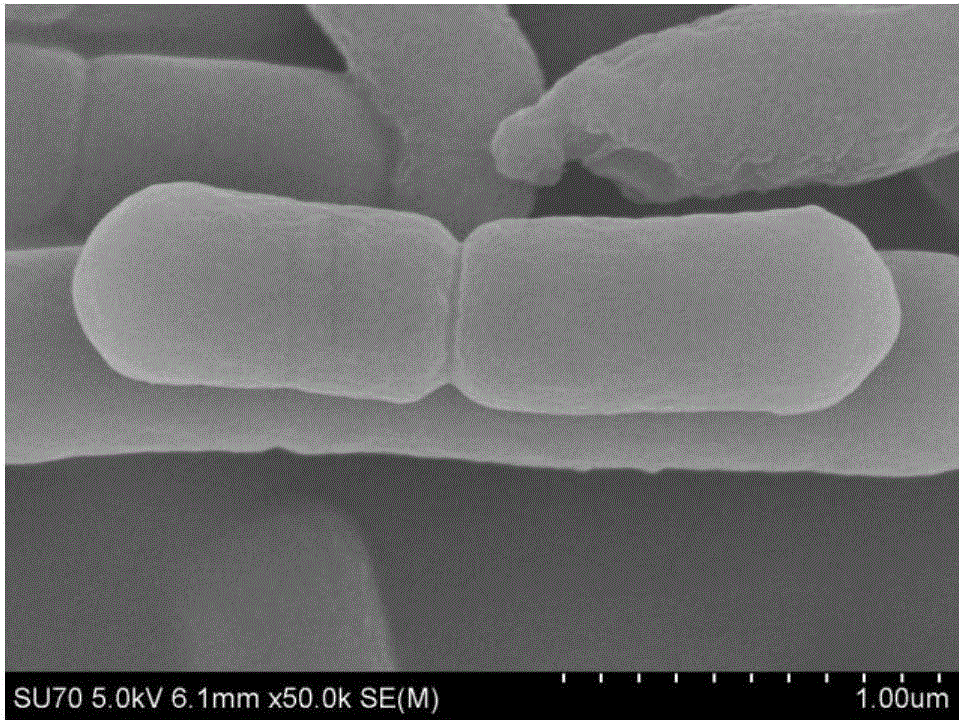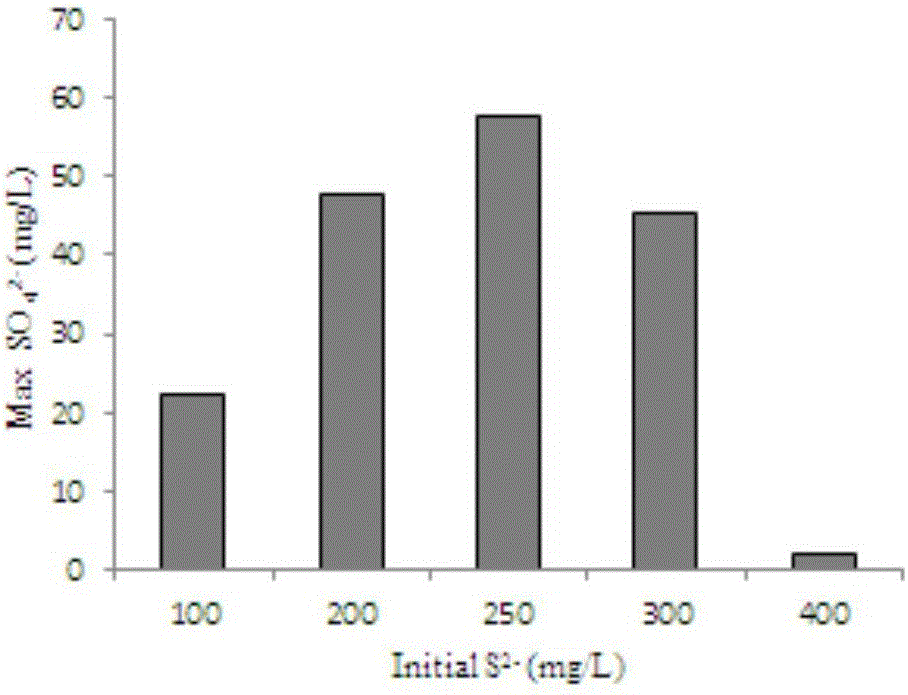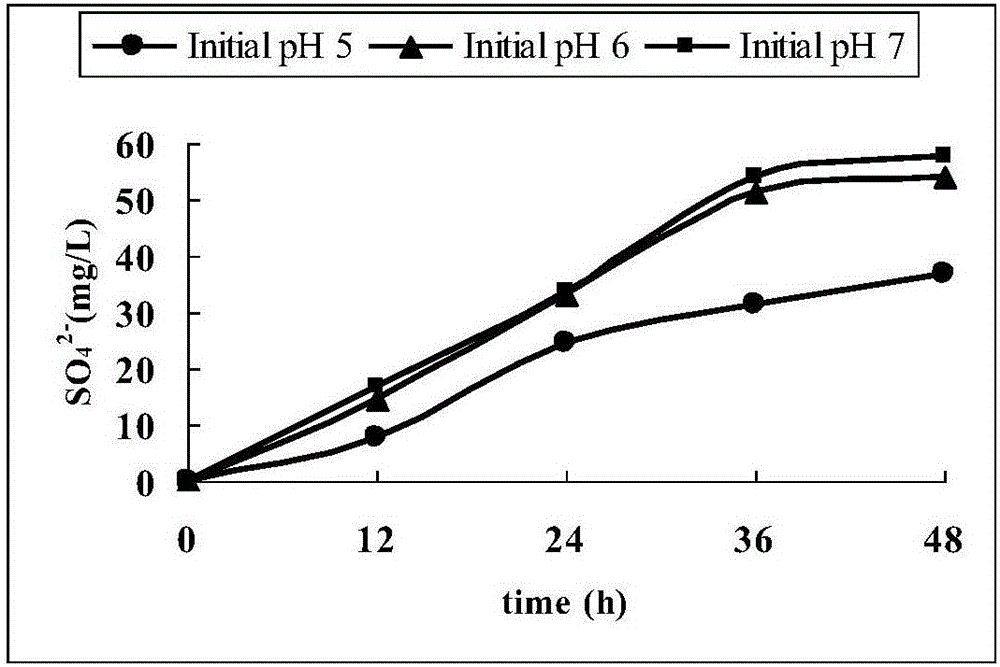Bacillus cereus and application thereof in oxidizing inorganic sulfide
A technology of Bacillus cereus and inorganic sulfide, applied in the direction of microorganism-based methods, bacteria, microorganisms, etc., can solve the problems of autolysis and reduce the rate of sulfur removal
- Summary
- Abstract
- Description
- Claims
- Application Information
AI Technical Summary
Problems solved by technology
Method used
Image
Examples
specific Embodiment 1
[0020] Now refer to Figure 1 to Figure 5 And specific embodiment 1 sets forth the present invention:
[0021] Specific Example 1 Source of mutant strain Bacillus cereus ZJNB-B3.
[0022] In 2015, the applicant took 250g of wet sludge deposited at the sewage discharge place of the fishmeal processing plant, and added Na 2 The method of S enriched and isolated a bacterium that can utilize inorganic sulfide, and the identification result was Bacillus cereus XJ-2 strain, with a desulfurization rate of 87.1%. The research paper on the isolation and identification of XJ-2 strain "A strain of fish meal Isolation and Identification of Strains for Removing Odor Gas from Processing Hydrogen Sulfide" was published in the Journal of Environmental Engineering in September 2015, 2015, 9(9): 4465-4470. Because the desulfurization rate of strain XJ-2 is not very high, the conditions under which XJ-2 can grow at pH 5.0 to 8.5 described in this paper are all in the natural growth state of th...
specific Embodiment 3
[0031] Specific Example 3 Study on the Physiological Oxidative Metabolism of Bacillus cereus ZJNB-B3 Strain to Different Concentrations of Sulfide.
[0032] Pick the slant culture of the two-ring test tube into 100ml of nutrient broth medium, shake and culture at 30°C for 18 hours to obtain the seed solution in the logarithmic growth phase. Inoculate the seeds in a nutrient broth medium with a pH of 7 and a total amount of 100ml at a volume ratio of 5 to 10%, and add Na 2 S aqueous solution, make the reaction initial S 2- The concentration is 100, 200, 250, 300, 400m g / L, placed at 30°C, 150r / min shaking culture for 48 hours, sampling and analyzing the content of sulfide and sulfate in the bottle every 12 hours, and the change of pH value, the results are shown in figure 2 . When the initial S 2- When the concentration is 400mg / L, the initial pH of 0h under this condition is as high as 9.3. Under strong alkaline conditions, the bacteria are partially killed and the growt...
specific Embodiment 4
[0033] Specific Example 4 Bacillus cereus ZJNB-B3 bacterial strain will S 2- Optimum initial pH value and optimum culture temperature for physiological metabolism of sulfate radicals produced by oxidation.
[0034] (1) The ZJNB-B3 strain oxidized the initial S 2- Concentration is 250mg / L can accumulate the sulfate radical physiological metabolism change that produces see image 3 , the accumulated sulfate concentration from high to low is pH7>pH6>pH5, therefore, the optimal initial pH value for the strain to oxidize sulfide to produce sulfate is 7.
[0035] (2) ZJNB-B3 strain oxidized the initial S 2- Concentration is 250mg / L can accumulate the sulfate radical physiological metabolism change that produces see Figure 4 , the accumulated sulfate concentration from high to low is 30°C > 25°C > 35°C, and the optimum culture temperature for the strain to oxidize sulfide to produce sulfate is 30°C.
PUM
 Login to View More
Login to View More Abstract
Description
Claims
Application Information
 Login to View More
Login to View More - Generate Ideas
- Intellectual Property
- Life Sciences
- Materials
- Tech Scout
- Unparalleled Data Quality
- Higher Quality Content
- 60% Fewer Hallucinations
Browse by: Latest US Patents, China's latest patents, Technical Efficacy Thesaurus, Application Domain, Technology Topic, Popular Technical Reports.
© 2025 PatSnap. All rights reserved.Legal|Privacy policy|Modern Slavery Act Transparency Statement|Sitemap|About US| Contact US: help@patsnap.com



